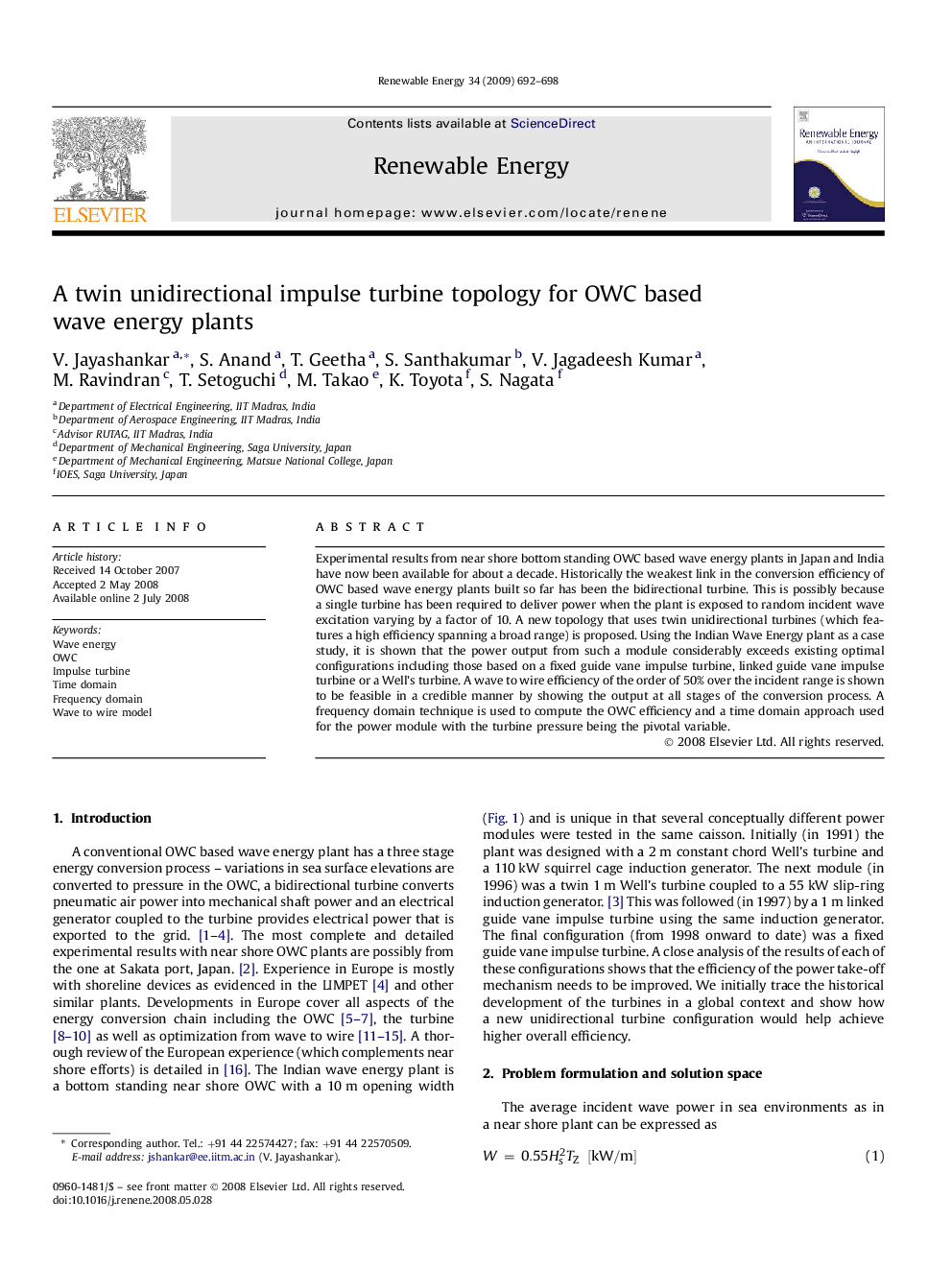| Article ID | Journal | Published Year | Pages | File Type |
|---|---|---|---|---|
| 302443 | Renewable Energy | 2009 | 7 Pages |
Experimental results from near shore bottom standing OWC based wave energy plants in Japan and India have now been available for about a decade. Historically the weakest link in the conversion efficiency of OWC based wave energy plants built so far has been the bidirectional turbine. This is possibly because a single turbine has been required to deliver power when the plant is exposed to random incident wave excitation varying by a factor of 10. A new topology that uses twin unidirectional turbines (which features a high efficiency spanning a broad range) is proposed. Using the Indian Wave Energy plant as a case study, it is shown that the power output from such a module considerably exceeds existing optimal configurations including those based on a fixed guide vane impulse turbine, linked guide vane impulse turbine or a Well's turbine. A wave to wire efficiency of the order of 50% over the incident range is shown to be feasible in a credible manner by showing the output at all stages of the conversion process. A frequency domain technique is used to compute the OWC efficiency and a time domain approach used for the power module with the turbine pressure being the pivotal variable.
